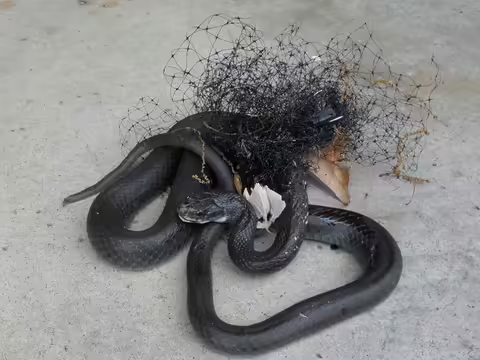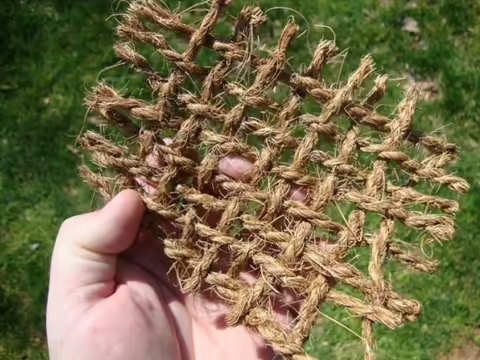URBANA, Ill. – Mesh made of metal, plastic, or natural fibers is often used in home landscapes, gardens, public areas, or construction zones. Mesh allows allows air, water, and plants to penetrate while keeping out larger objects. Homeowners may use mesh to keep birds from eating berries off bushes or around gardens to keep out deer.
Unfortunately, mesh used in natural landscapes can be dangerous for wildlife, especially for snakes. Mesh barriers may trap snakes, birds, turtles, frogs, and other wildlife. Animals trapped in mesh netting may die from exposure to the sun or suffer injuries while trying to escape.
For example, Wisconsin educator Josh Kapfer recently found 22 foxsnakes entangled in erosion control blankets in one day; six perished before they could be released. Two studies examining erosion control products found that products containing a plastic mesh were the most dangerous to snakes, especially large snakes.
Use of more wildlife-friendly mesh
The findings have alarmed biologists, and their concerns have led some states to change the types of erosion control mats used along roadsides and in construction projects. Wildlife-friendly erosion control products are made of loosely woven organic materials, such as wheatstraw or coconut fiber, with large holes that allow snakes to pass through.
Nationwide, the transportation industry is trending towards more widespread use of wildlife-friendly erosion control products. The goals include protecting threatened and endangered animals and keeping microplastics out of the environment.
Kimberly Burkwald of the Illinois Department of Transportation, says IDOT is sponsoring a study on the effectiveness of different erosion control mats, with the goal of finding products safe for wildlife and effective at erosion control. Changing states’ erosion control practices is important because these products are used across large areas and are not always monitored for wildlife entrapment.
Use of mesh in yards and gardens
What happens in your backyard is also important to snake conservation.
"Even if you monitor your garden every day, I recommend that you look for alternatives to mesh or use wildlife friendly mesh," says Joy O'Keefe, University of Illinois Extension wildlife specialist. "Try using stiff, woven wire fencing, such as chicken wire, to keep wildlife out of the garden or hang flags or flashy pie pans from a line to keep birds and deer away from your crops."
Installing bird or bat houses on metal poles or using baffles on the post could help keep predators like snakes and raccoons from climbing the post, O'Keefe says. Look for mesh in the environment and let others know about the dangers these products pose to animals.
"If we all make a concerted effort to find alternatives to plastic mesh, we’ll make our backyards, parks, and other natural spaces much safer for the wildlife which coexist with us," O'Keefe says.
O'Keefe invites the public to contact her at jmokeefe@illinois.edu if they've had success in switching to alternative products.
AUTHOR: Joy O'Keefe, University of Illinois Extension Wildlife Specialist
ABOUT EXTENSION: Illinois Extension leads public outreach for University of Illinois by translating research into action plans that allow Illinois families, businesses, and community leaders to solve problems, make informed decisions, and adapt to changes and opportunities.

